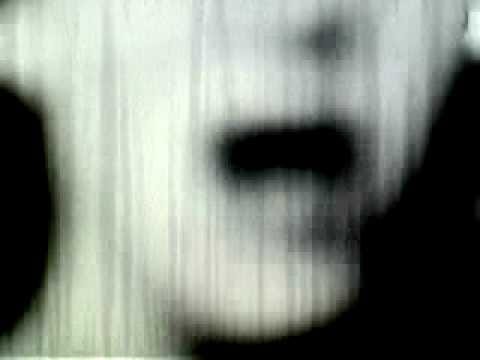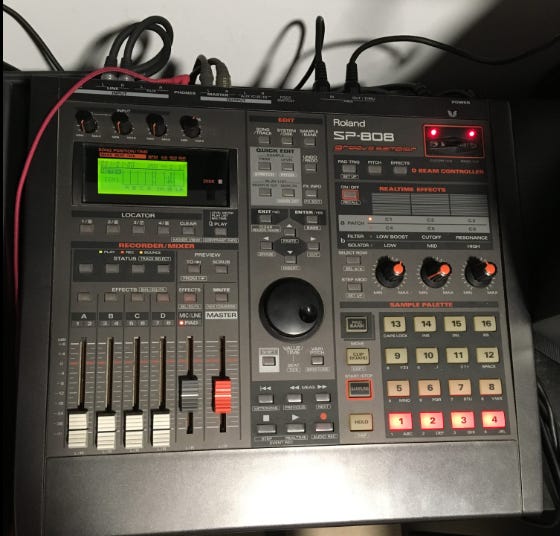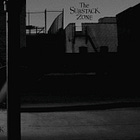EPISODE 06 / WE WILL ROCK YOU / SAMPLING AND COMPOSING WITH VIDEO
Of Sound and Fury: The Music Behind the Madness
Twenty one years have passed since my weekly residency at Pianos in NYC. The show was so rewarding, and in 2004, ahead of its time.
Every Thursday night, I jammed with Miles Davis, Jimi Hendrix, Maria Callas, Glen Gould, Mstislav Rostropovich, and others. These iconic figures, projected on and behind me, were larger than life. I grooved on bass, triggered beats, layered samples, and presented a one-of-a-kind musical experience. The compositions were not mash-ups. Far from it. They were original pieces presented in a unique way.
THE PROMO
THE IDEA
The idea occurred to me while listening to music with a friend. It happened during a John Bonham drum fill. Even though I was listening to the fill, in my mind I could clearly see him playing that fill. And there it was. The concept for the live performance. What you hear is what you see. This was going to be an homage to the musically-diverse 20th century, and I was on a mission to find the coolest clips and musical moments.
THE PROCESS
It took months to find, capture, and organize the clips that I needed to create the performance. I purchased, rented, borrowed, and sourced material from record shops, friends, and the public library. It proved to be a time-consuming and challenging method for composing a song—video as sound source, editor as composer.
The final videos were composed and created in Final Cut Pro, which required multiple steps. First, create the drum groove and establish the track tempo. Second, load a clip into Ableton Live and render the clip to match the track tempo. This insured that the clip would be locked into the groove as long as it is triggered on the one. Third, create the composition.
Next, add effects to the footage in real time with VidVox, a video effects application. By assigning individual clips to a keyboard’s white keys and video effects to the black keys, the clips and effects can be performed on the fly, to the tempo of the song. Recapturing the effected footage into FCP for the final edit degraded the quality of the video and added a dreamy, soft-focus quality—that of faded memories. I loved the look.
The last step in creating the video aspect of a piece was to develop its visual story line. The streets of NYC are a wealth of photographic possibilities, and I had a library of B-roll which I had taken over the past few months. This footage would set the tone and add a visual grace to the pieces.
THE LIVE PERFORMANCE
I launched the videos from a laptop and projected them onto two large screens behind me. I held the groove down on bass guitar and triggered sounds via a Roland SP-808.
The SP-808 was a badass piece of gear. It held sixteen samples per bank. A foot switch was used to trigger a preselected sample. Two additional sounds were launch by passing an object through two laser beams that shot out of the the sampler. With both hands needed to play the bass, passing the bass head across a beam was the smoothest way to trigger a predetermined sound.
THE VIDEO
SOMETHING OLD
VANILLA FUDGE / You Keep Me Hangin’ On / 1968
Vanilla Fudge performed their psychedelic, slowed-down cover of You Keep Me Hangin’ On on The Ed Sullivan Show on January 28, 1968. This performance is legendary because it showcased the band’s heavy, dramatic take on the song, which was originally recorded by The Supremes.
The performance was visually and sonically intense, featuring the band’s signature Hammond organ-driven sound, heavy drums, and soulful, almost operatic vocals. Mark Stein (keyboards/vocals), Vince Martell (guitar), Tim Bogert (bass), and Carmine Appice (drums) delivered a performance that was raw and powerful, capturing the emerging psychedelic and hard rock movement of the late '60s.
Their appearance on The Ed Sullivan Show helped propel You Keep Me Hangin’ On up the charts, reinforcing their status as one of the heaviest bands of their era. It was also significant because it was rare for a hard rock or psychedelic act to appear on the show, which typically featured more mainstream pop acts.
SOMETHING NEW
FUFANU / “Circus Life” / December 2015
Fufanu is an Icelandic post-punk/electronic band known for their dark, atmospheric sound that blends elements of krautrock, new wave, and industrial music.
Their first KEXP performance of “Circus Life” took place during Iceland Airwaves, a festival known for showcasing Iceland's vibrant music scene. The song, from their debut album Few More Days to Go (2015), has a brooding, hypnotic quality, driven by pulsating bass lines, droning guitars, and Kaktus Einarsson’s deep, detached vocals.
In the KEXP session, Fufanu delivered an intense, moody rendition of “Circus Life,” with a stage presence reminiscent of post-punk greats like Joy Division and Bauhaus. The performance highlighted their minimalist yet gripping aesthetic, with tightly controlled rhythms and a mechanical, almost dystopian energy.
Their KEXP set helped introduce them to a wider international audience, solidifying their reputation as one of Iceland’s most intriguing alternative bands.
PREVIOUSLY ON OF SOUND AND FURY:
Life has a way of showing us who we really are. Music helps me make sense of it, and sharing these stories connects the dots.
If something here speaks to you, I'd love to hear about it. Hit the like button, leave a comment, or subscribe to join the conversation. Thank you.








Thanks for laying out your process, Nolan -- this is fascinating. I've been considering a similar project inspired by Mark Guiliana, who I've been studying with since the beginning of the pandemic. He's touring his solo show around tour legs with St. Vincent -- I bet you would dig it.
You had a copy of that show up on your website for download at one point and I continue to listen to it to this day, I always found it very inspiring and I always wished I had been able to see it. You also sent me a burned compilation dvd of a bunch of videos when I purchased the Short Stories Cd from your website that I absolutely loved!